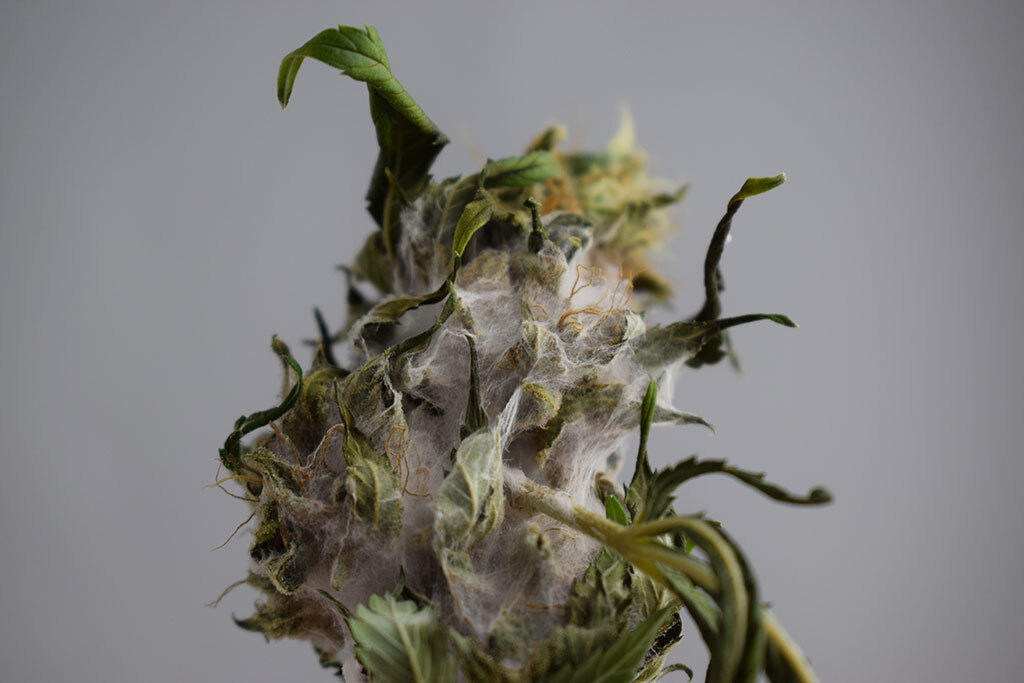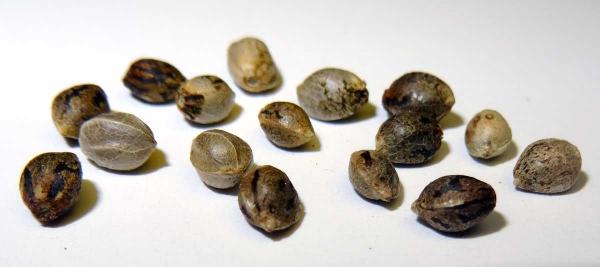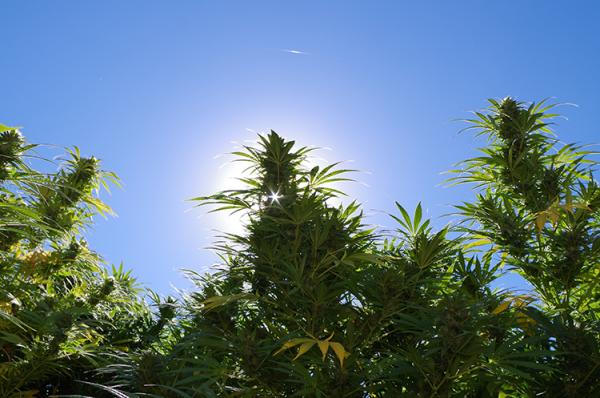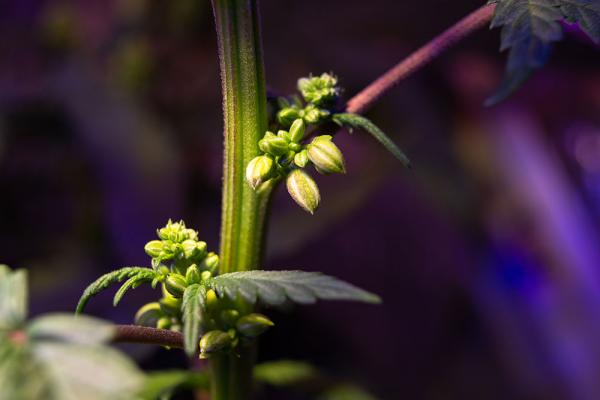You’ve done all of your homework, you’ve invested in good genetics and grow equipment and followed the grow instructions of your favourite cannabis book (or blog) to a tee, yet despite all of your efforts you notice a white powdery substance on your leaves or perhaps some grey fuzz on your buds or maybe some other signs of plant distress that you can’t quite put your finger on. If any of these apply to you, you could be dealing with nearly every gardener’s biggest fear: moldy weed.
Whatever the type of fungal infestation, moldy weed can affect even the most experienced gardener, though if you take the right preventative measures and act timely if you do spot an infestation, you can greatly reduce the risk of mold in your garden and keep your harvest safe. Below we will go through the ways of identifying, preventing and treating various mold varieties once they do appear.
Know Your Enemy: Identifying Common Types of Mold
Molds are a type of fungus, which includes various types of yeast, molds, mildews and mushrooms, have been around for billions of years and are absolutely vital to the cycle of life, acting as decomposers of dead matter. Without fungi, life on earth as we know it would not be possible.
Fungi reproduce through spores, which are found everywhere and can lay dormant until conditions are ripe for them to work. We should absolutely respect their function in the life cycle, however, as cannabis lovers, we want to keep them out of our gardens to the greatest extent possible. Below we present the most common types of fungal infestations in cannabis.
Powdery mildew
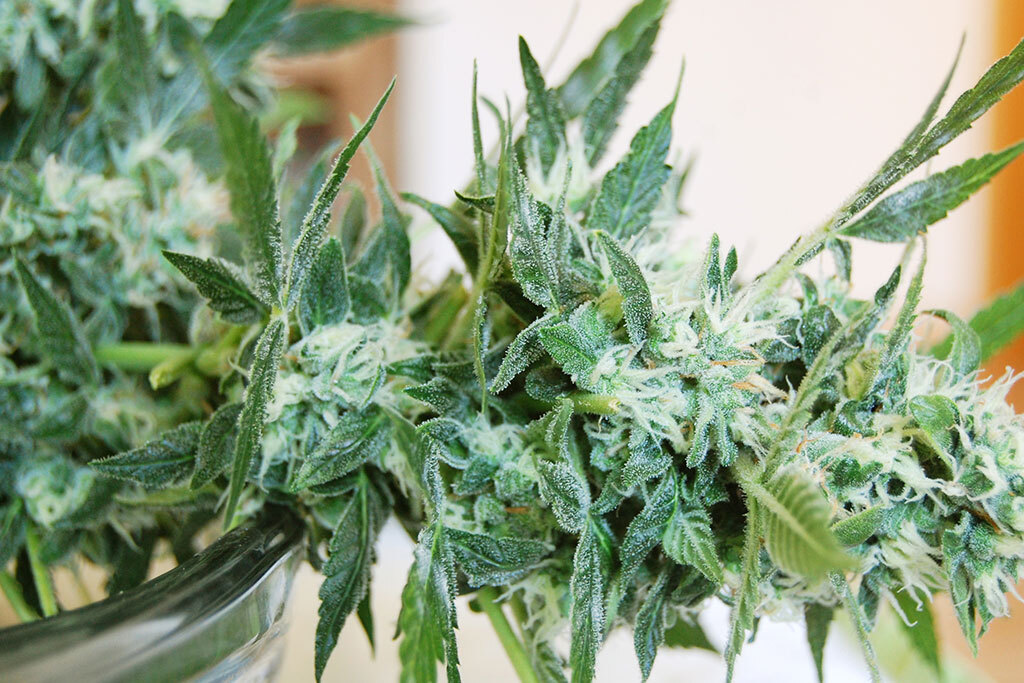
These are perhaps the easiest to identify thanks to their easily recognizable appearance. Powdery mildew forms on the surfaces of leaves during the vegetative phase as well as on buds and looks a white powder that someone maliciously sprinkled on your plant.
Starting on the lower branches, it can quickly make its way up the plant. Some growers can mistake it for plant trichomes, which is why you should check the lower leaves first, preferably with a magnifying glass. If you do detect powdery mildew on your leaves, no need to panic. While this mold won’t kill your plants, if it does make its way to the buds, they will be unconsumable.
Powdery mildew results from high humidity and lack of airflow, so to prevent it make sure to keep your grow space well-ventilated and at 50% relative humidity or below. Wipe down the affected foliage with water and then spray with neem oil, horsetail or any other organic fungicide to stop the spread.
Sooty Mold
As the name suggests, this looks like soot and is an indication of an insect infestation such as whiteflies and aphids, which leave waste (excrement) on the leaves after feeding on them. This means you have to deal with the pest infestation first, however treatment for sooty mold is rather easy once the insects have been eliminated.
Higher grow room temperatures are usually the culprit here, so make sure you keep the temperature below 25°C and check your plants daily for any bug presence. Once bugs have been detected, use an organic foliar spray such as neem oil to eliminate them. Water alone can then be used to wipe of the relatively harmless mold, but spraying leaves with neem oil will help prevent the return of unwanted visitors.
Root rot (fusarium)
This is quite a serious infestation, as you can lose your entire crop very quickly. Root rot starts out in the soil and can cause plants to wilt and collapse, ultimately killing them. It can be identified by looking at lower leaves, where it starts as dark spots and the leaves quickly turn yellow-brown in color. The roots turn red under the top soil and the infestation continues upward through the stem, causing it to swell and break open. In this case, prevention is your only cure as there are no direct treatments available just yet.
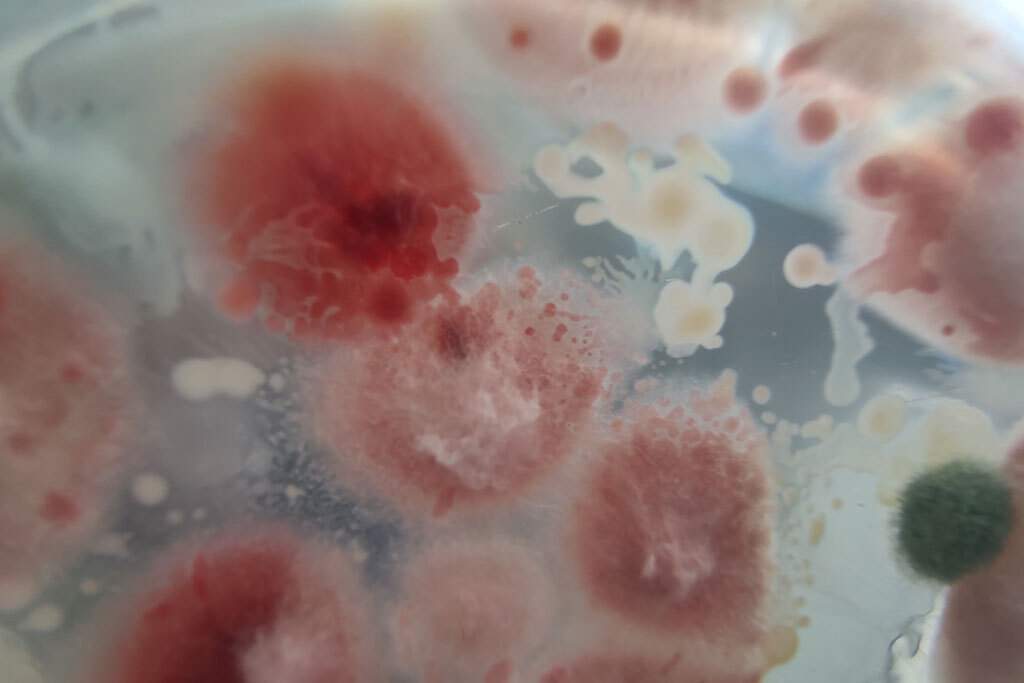
Once spotted, infected parts of the plant must be removed immediately. Having a healthy soil is key here, so try to add beneficial microbes (i.e. mycorrhizae), keep the soil relatively dry (not soggy) by not overwatering and keep it breathable by using smart pots or fabric pots and add perlite or other mineral that improves aeration and drainage. If possible, replace your soil after each crop or at the very least sterilize it to eliminate any potential spores.
Bud rot (botrytis)
Also known as grey mold, this common fungus can attack roots, stems, leaves as well as buds and is known to spread quickly. It infests plants through the air via open wounds, such as a snapped branch or damaged leaf. It appears as little black dots before developing fluffy white growth in the core or on the sides of buds, which means it usually appears during the flowering stage. It will turn grey and black before becoming a slimy, yucky mess. moldy weed at its worst.
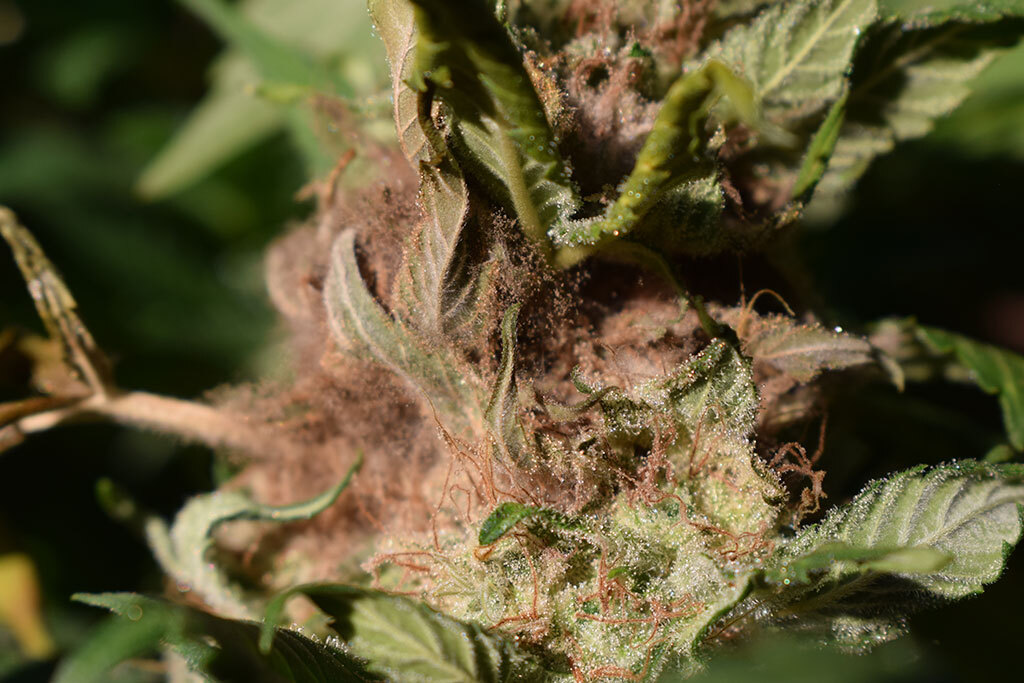
Once detected, there isn’t much you can do as spraying it with chemicals will only leave that taste on your nearly finished buds, so isolating and carefully discarding affected areas is the only real treatment. Make sure your RH is below 50% and that you have proper ventilation throughout your garden.
Recommended Mold-Resistant Cannabis Strains
In addition to prevention, proper genetics can also act as a defense. No cannabis variety is 100% immune to any pest or disease infestation, but there are several out there that are highly resistant to mold and bugs that will help growers sleep a little easier at night.
For photoperiod varieties try Big Bud, Strawberry Cough, Master Kush, Northern Lights and Wedding Cake.
For autoflowering varieties, White Widow Max Auto, Auto Girl Scout Cookies, Sour Diesel Auto and Auto Gorilla glue are highly recommended.
Even the best strains still need good management
Preventing mold on cannabis plants is very similar to preventing it in a house. Try to reduce humidity and increase air circulation. Outdoor growers may have to hope that luck goes their way on this but indoor growers can use dehumidifiers and/or fans. Make sure there's a decent amount of space between the plans and if necessary trim them. Removing excess leaves will help improve airflow, but the effect will be completely negated if you simply put the leaves in a bin in the growing area. They need to be completely removed from the growing area. Mold also thrives in waterlogged soil so make sure your watering system gives the plant what it needs and only what it needs. Finally, keep the growing area scrupulously clean. This starts with removing anything which could harbour mold so remove any fabrics and keep pets out (they can bring in mold on their coat and paws). Avoid using plastic sheeting as this traps moisture very easily and therefore attracts mould.
Avoid Moldy Weed And Beat It For Good
As the saying goes, an ounce of prevention is worth a pound of cure. Air flow, humidity, spacing and temperature are all key factors in maintaining a healthy, pest and mold-free environment. Defoliation and preventative spraying with organic products should help keep the bad guys away, but regularly inspecting your garden for any uninvited guests is the best way of preventing a moldy weed infestation before it’s too late. With that in mind, stay vigilant and happy growing!

